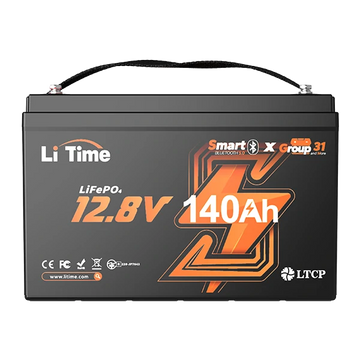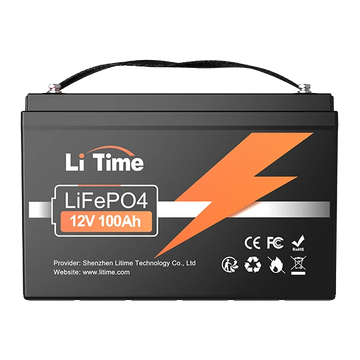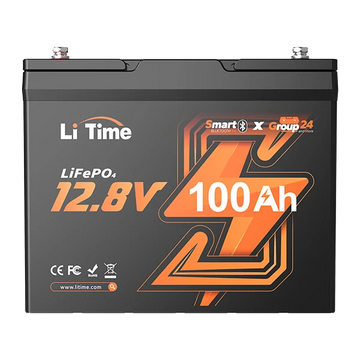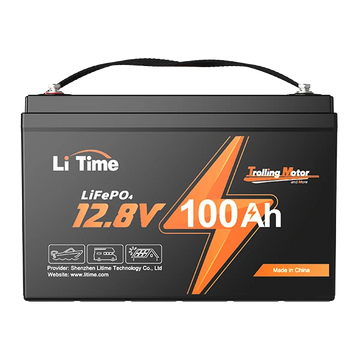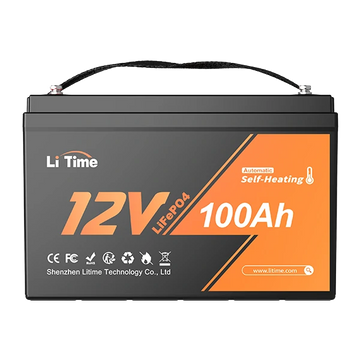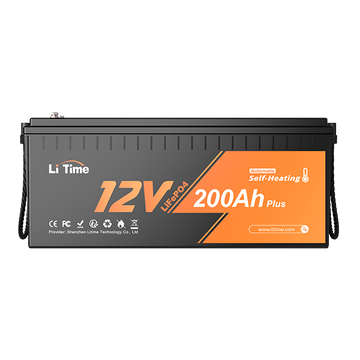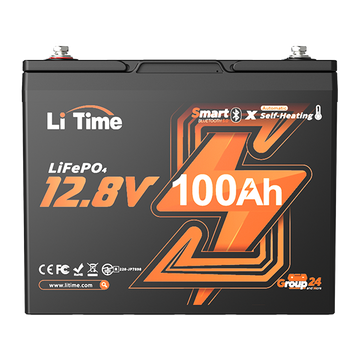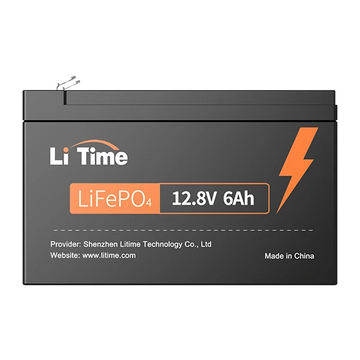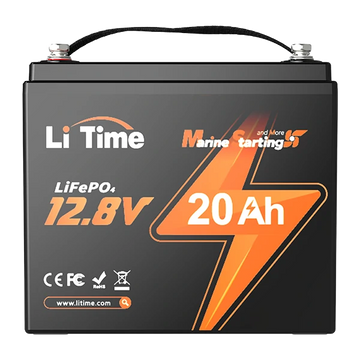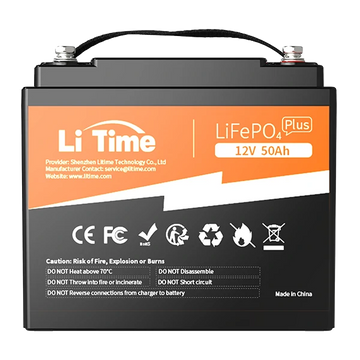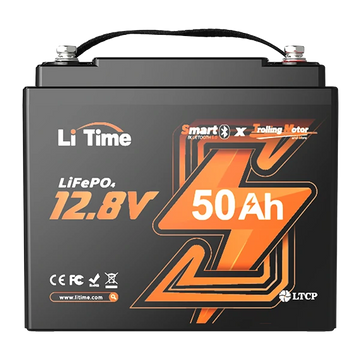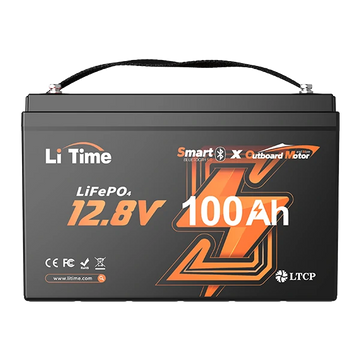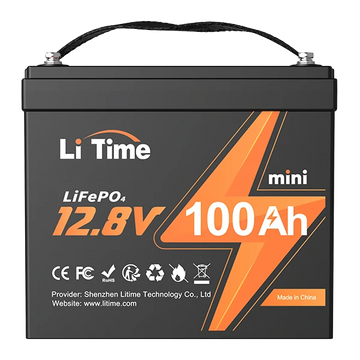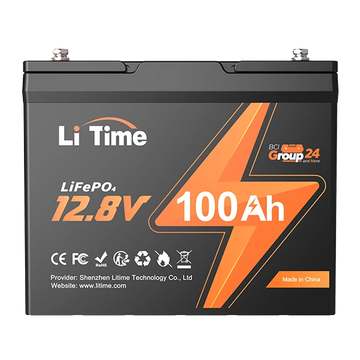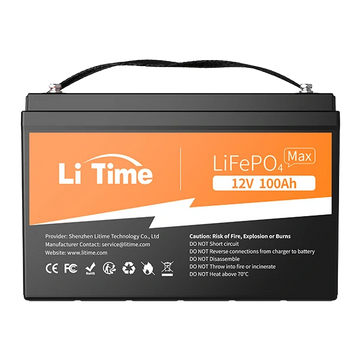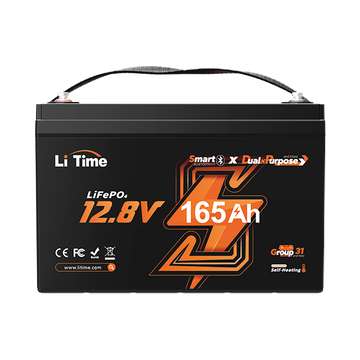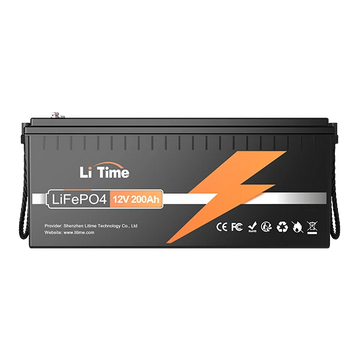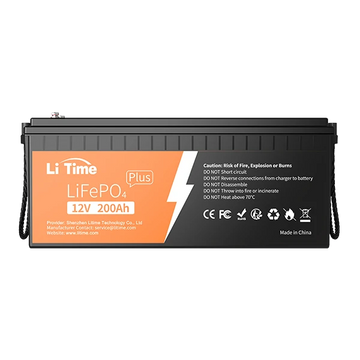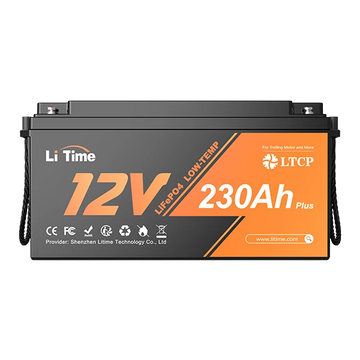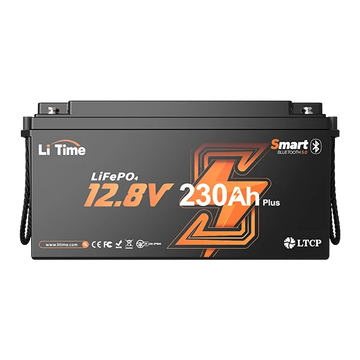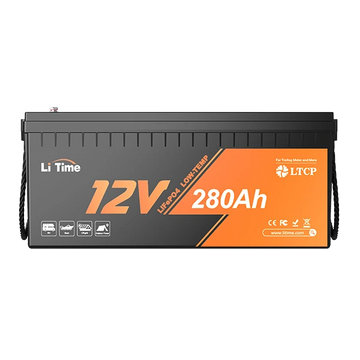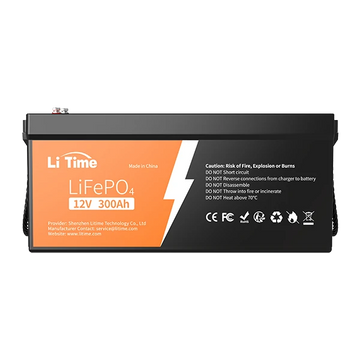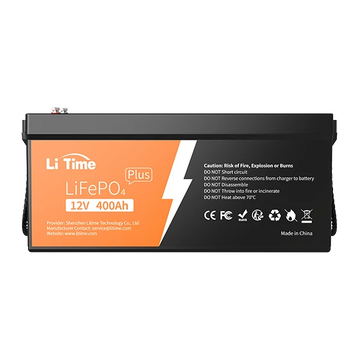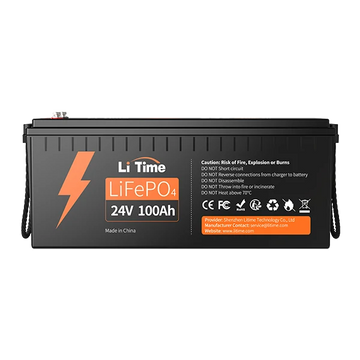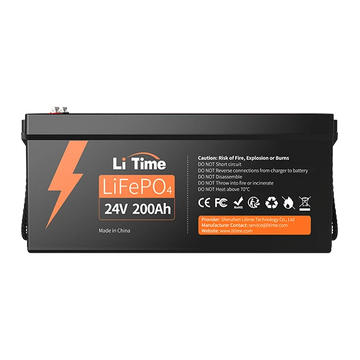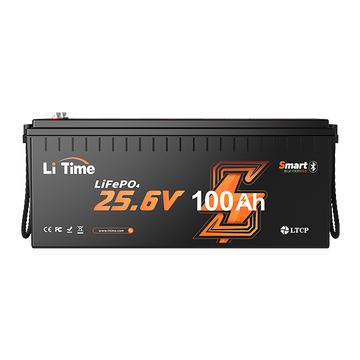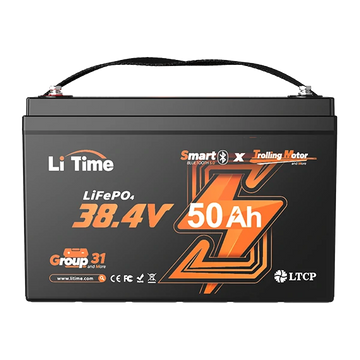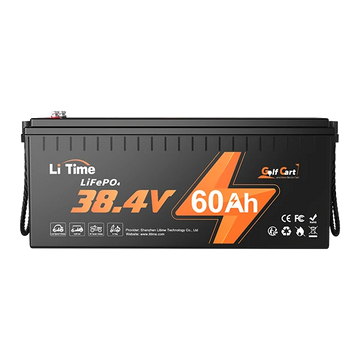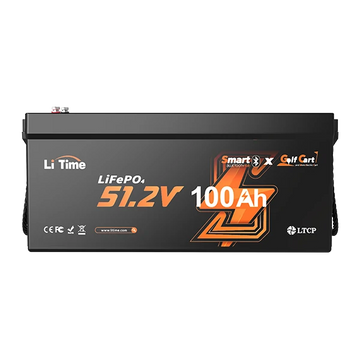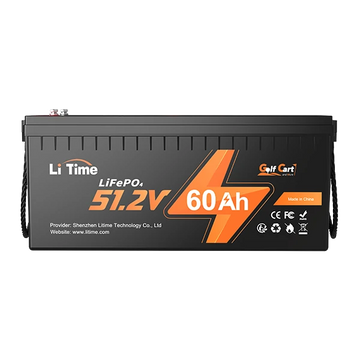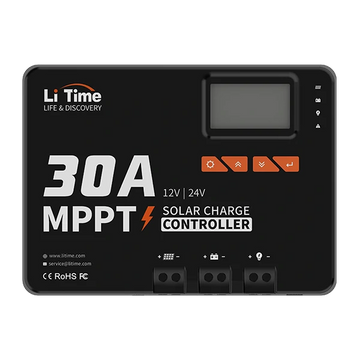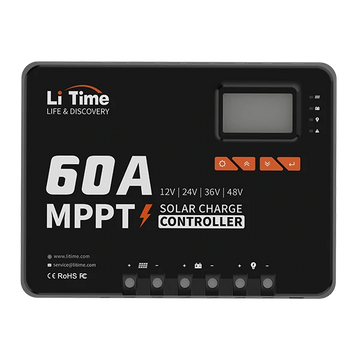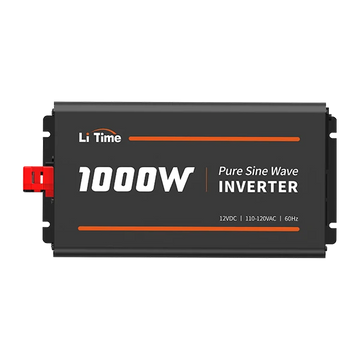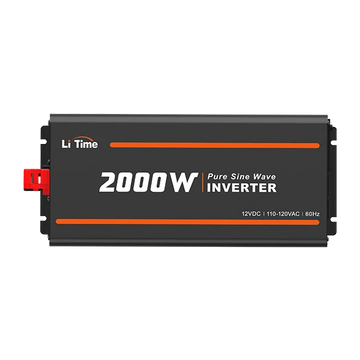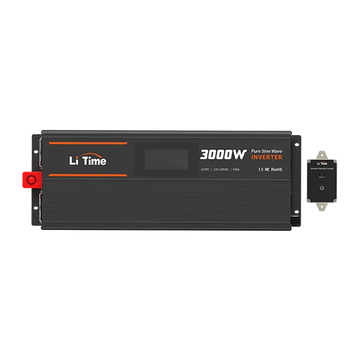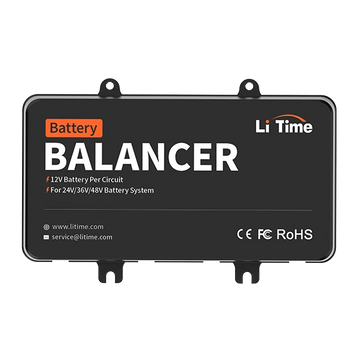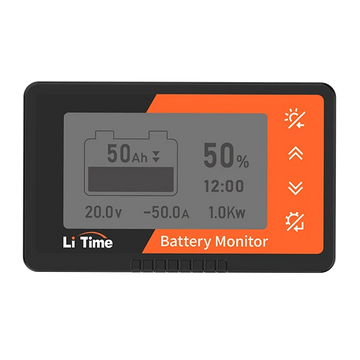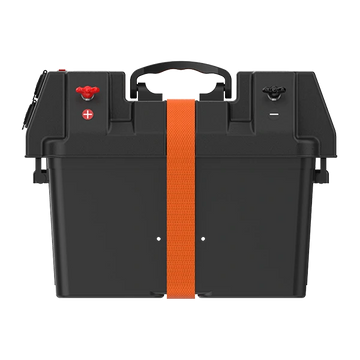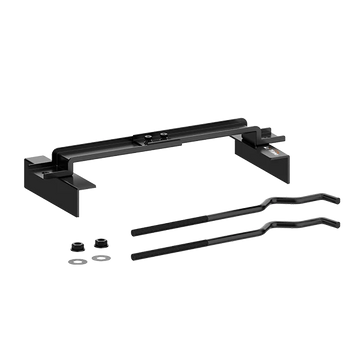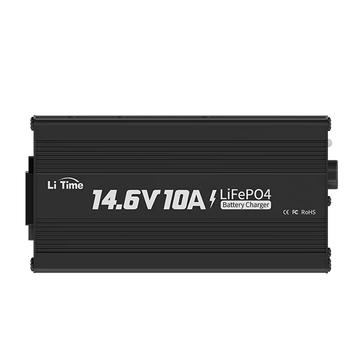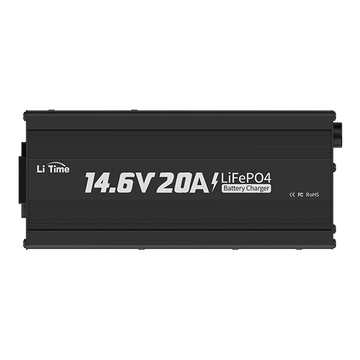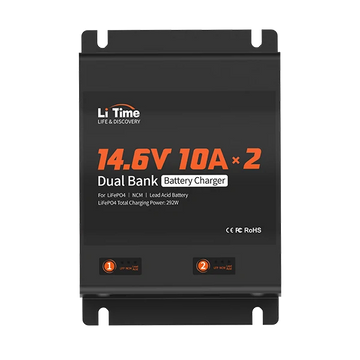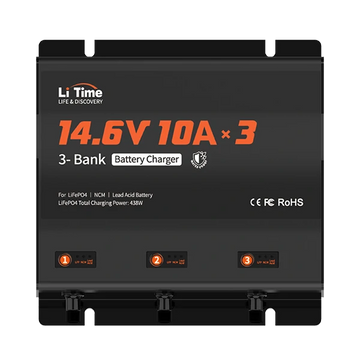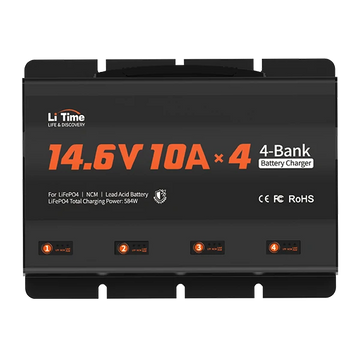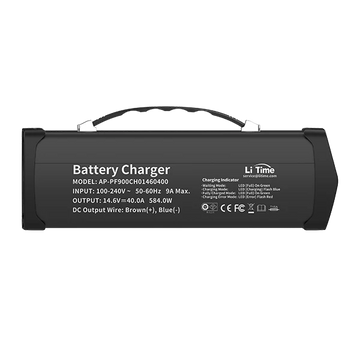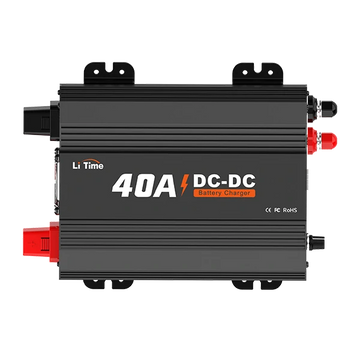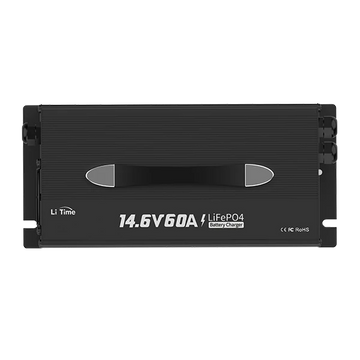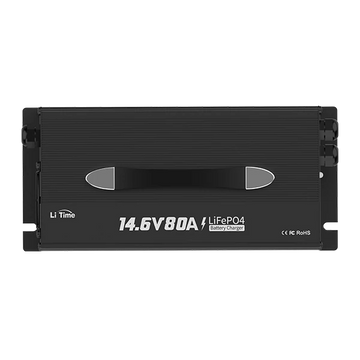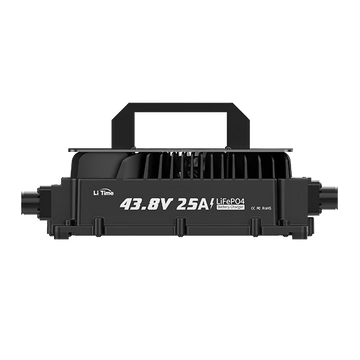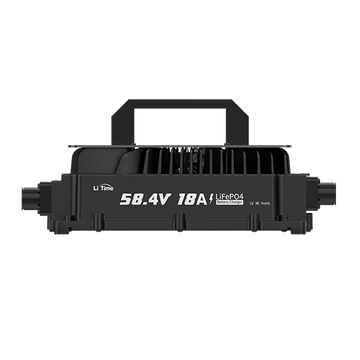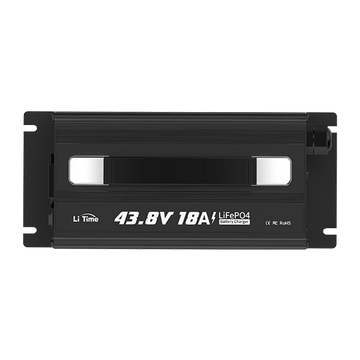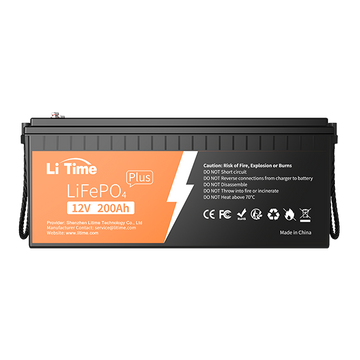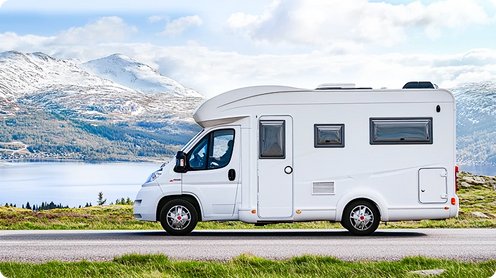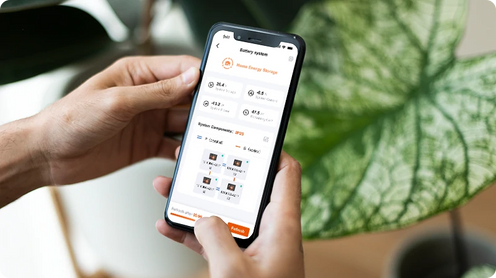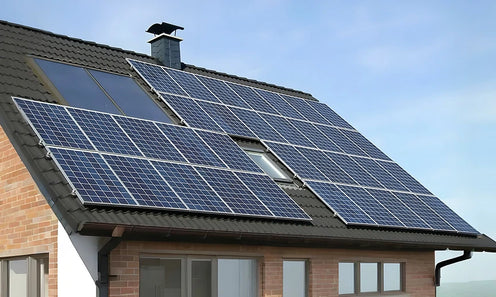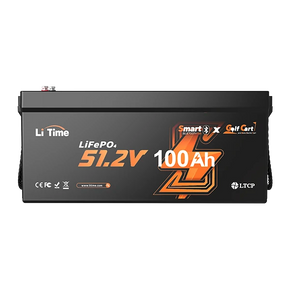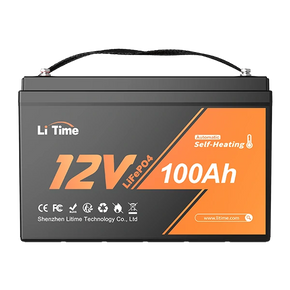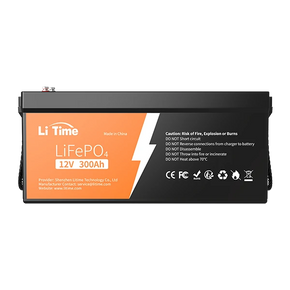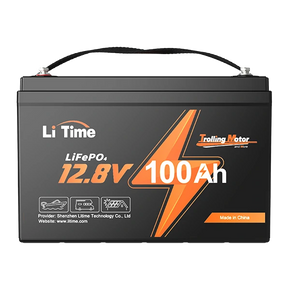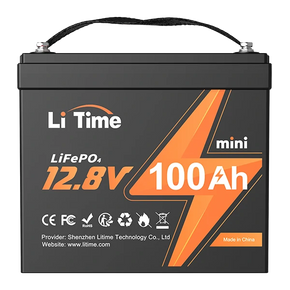LiFePO4 battery life is a key factor that affects both performance and reliability. As a popular choice for trolling motors, golf carts, RVs, and solar energy systems, LiFePO4 (lithium iron phosphate) batteries are known for their high safety, long lifespan, and stable output. But how long do they actually last—and what can you do to make them last even longer?
In this post, we'll explore how LiFePO4 batteries work, what affects their lifespan, how to extend it, and which trusted products are worth considering.
Table of Content
- What Is a LiFePO4 (Lithium Iron Phosphate) Battery?
- Understanding LiFePO4 Battery Life and Cycle Durability
- How the LiFePO4 Battery Voltage Chart Explains Cycle Behavior
- Factors That Affect LiFePO4 Battery Life
- Signs of Aging in Lithium Iron Phosphate Batteries
- How to Extend LiFePO4 Battery Life?
- Best LiFePO4 Battery Recommendations
- FAQs on LiFePO4 Battery Life
What Is a LiFePO4 (Lithium Iron Phosphate) Battery?
LiFePO4 batteries, short for lithium iron phosphate batteries, are part of the lithium-ion battery family. First introduced by a research team at the University of Texas in 1996, this chemistry has since become popular for its outstanding safety, durability, and overall reliability.
LiFePO4 batteries come with several key advantages:
- Ultra-long lifespan: Capable of 3,000–5,000+ charge cycles—far exceeding lead-acid and NCM lithium batteries.
- High safety: Excellent thermal stability, with low risk of thermal runaway, fire, or explosion.
- Stable discharge: A consistent voltage curve makes them ideal for voltage-sensitive electronics.
- Compact and efficient: Higher energy density per volume and weight, great for portable applications.
- Low self-discharge: Minimal power loss when idle, ideal for long-term storage.
Thanks to nano-scale lithium iron phosphate material, these batteries offer lower internal resistance and support high-rate charging and discharging without overheating. They also tolerate overcharging better than most lithium chemistries.
However, the lower nominal voltage per cell (around 3.2V) means their energy density is slightly lower than NCM batteries. Performance may also decrease in extreme heat or cold, and self-discharge can be higher, so it's best to use high-quality cells with a smart Battery Management System (BMS) to ensure long-term stability.

Today, LiFePO4 batteries are widely used in RVs, trolling motors, golf carts, and solar energy storage systems—anywhere safety and long cycle life are essential. They're also becoming a preferred replacement for traditional lead-acid batteries in many off-grid and mobile power setups.

Understanding LiFePO4 Battery Life and Cycle Durability
One of the most appealing features of LiFePO4 batteries is their exceptionally long lifespan. Under ideal conditions, these batteries can deliver over 3,000 to 5,000—far outpacing traditional lead-acid and many other lithium battery chemistries. This is why they are widely used in high-frequency, long-duration applications like RVs, solar systems, and trolling motors.
However, battery life depends not only on the chemistry but also heavily on how the battery is used and maintained. Charging a LiFePO4 battery correctly is one of the most important factors in preserving its cycle life. To better understand this process, let’s take a closer look at the LiFePO4 battery voltage chart below, which illustrates key charging characteristics and the risks of premature aging.

How the LiFePO4 Battery Voltage Chart Explains Cycle Behavior
As shown in the chart, a typical LiFePO4 charging process includes two main phases:
- Constant Current (CC) phase: Represented by the blue line (charge current), where the battery receives a high, steady current and the voltage gradually rises. Most of the battery's capacity is filled during this stage.
- Constant Voltage (CV) phase: Represented by the red line (cell voltage), which holds steady at the full-charge threshold (typically 3.65V per cell for LiFePO4). During this phase, the current gradually decreases, and the rate of capacity gain slows.
The black dashed line represents the total charge capacity. You’ll notice the steepest growth happens during the CC phase, while the CV phase adds only a small percentage of capacity at a much slower rate.
This chart highlights an important takeaway: frequently charging a LiFePO4 battery to 100% is not ideal for long-term health. While the final 10–20% of capacity is technically reachable, it comes at the cost of slower efficiency and added stress on battery materials—factors that can accelerate aging over time.
Factors That Affect LiFePO4 Battery Life
Even though LiFePO4 batteries are known for their durability, improper use can still lead to early degradation. Below are the key factors that can significantly impact their lifespan:
1. Temperature Fluctuations
High temperatures can accelerate internal chemical reactions, reducing battery life, while low temperatures increase internal resistance, which weakens performance. For optimal longevity and stable operation, it’s best to keep LiFePO4 batteries within the recommended range of –10°C to 60°C (14°F to 140°F).
2. Depth of Discharge (DoD)
The deeper you discharge a battery before recharging, the more strain it places on internal materials. While LiFePO4 batteries are capable of deep cycling, regularly draining them to near 0% can still shorten their lifespan.
As seen in the earlier charging voltage chart, batteries operating in low-voltage zones (deep discharge) are more vulnerable to stress and degradation. In contrast, moderate discharges result in more stable charging curves and reduced wear. For daily use, it’s recommended to cycle the battery between 20% and 80% for better long-term health.
3. Charge/Discharge Rates
Charging a LiFePO4 battery too quickly or discharging it at high current levels can lead to excessive heat buildup and may trigger the battery’s protection mechanisms. Maintaining moderate, steady charge and discharge rates helps reduce stress on the cells, prevents premature aging, and extends overall battery life.
4. Battery Quality
Not all LiFePO4 batteries are built the same. High-quality batteries typically use better-grade cells and advanced Battery Management Systems (BMS), which help maintain performance under heavy loads and reduce internal stress. Though they may cost more upfront, premium batteries usually last longer and deliver more reliable performance over time.
Signs of Aging in Lithium Iron Phosphate Batteries
Even with proper care, LiFePO4 batteries will naturally degrade over time. Recognizing the signs of aging early on can help you make adjustments or replacements before serious performance issues arise.
1. Noticeable Capacity Loss
As the cycle count increases, the battery's usable capacity gradually decreases. For example, a 100Ah battery might drop to 80Ah or less after several years. If your system runs for much shorter periods after a full charge, this is a clear sign of capacity loss.
2. Higher Internal Resistance & Excessive Heat
Aging batteries tend to develop higher internal resistance, which leads to more heat generation during use. Devices may respond more slowly or even shut down unexpectedly under heavy load.
3. Slower Charging
Charging a LiFePO4 battery becomes less efficient as it ages, with longer charge times, slower voltage rise, and sometimes the inability to reach full charge.
4. Rapid Power Drop
Even after a full charge, you may notice the battery drains quickly under light use. This suggests the battery is struggling to maintain a stable voltage output.
If you notice any of these symptoms, it's a good idea to test your battery's capacity or check cell voltages. Replacing the battery at the right time helps ensure continued safe and reliable operation of your system.
How to Extend LiFePO4 Battery Life?
To get the most out of your LiFePO4 battery, proper usage and storage are just as important as choosing a high-quality product. Follow these best practices to reduce performance loss and extend your battery's lifespan:
1. Store at the Right Temperature
LiFePO4 batteries should be kept in a cool, dry place. The ideal storage temperature is between 0°C and 25°C (32°F–77°F). Exposure to extreme heat or cold can accelerate aging and reduce cell activity. Avoid leaving batteries in hot vehicles, damp garages, or freezing outdoor spaces.
2. Maintain a Partial Charge for Long-Term Storage
If storing the battery for an extended period, keep it at around 50% charge, rather than fully charged or completely drained. Both extremes can lead to capacity loss over time and affect future performance.
3. Use a Dedicated LiFePO4 Charger
Always use a charger specifically designed for LiFePO4 batteries. It ensures the battery charges within the correct voltage and current range, helping to prevent overcharging or undercharging—both of which can shorten battery life.
4. Avoid Over-Discharging
Charging a LiFePO4 battery after it drops to 0% too often can speed up degradation. It's best to recharge around 20% capacity to protect the cells and prolong battery life.
5. Keep the LiFePO4 Battery Clean and Dry
Regularly check the battery casing and terminals to ensure they are free of dirt and moisture. If needed, wipe them down with a dry cloth. Clean terminals help prevent corrosion, poor contact, and other system issues, keeping everything running smoothly.
Best LiFePO4 Battery Recommendations
Now that we've explored the key factors affecting LiFePO4 battery life and how to maintain them properly, the next question is: Which battery should you choose?
This is especially relevant right now, as spring arrives in Canada. With the snow melting and temperatures rising, it's the perfect season for RV travel, camping, and fishing trips. Choosing a lightweight, safe, and long-lasting LiFePO4 battery ensures your outdoor power needs are met reliably, no matter the changing weather conditions.
Based on these seasonal demands, LiTime's two 12V 100Ah lithium batteries are ideal for Canadian users looking for compact, high-efficiency, all-weather performance. Whether you need power for your RV, boat, or portable solar system, these options are built to perform.
🔋 LiTime Canada 12V 100Ah Group 24 LiFePO4 Battery
Compatible with most RVs on the market, this Group 24 battery uses EV-grade cells and delivers over 4,000 deep cycles, lasting more than 10 years. Compared to traditional lead-acid batteries, it's smaller and lighter but delivers 1280Wh of steady power. With IP65 waterproofing and a 100A smart BMS, it's safe for outdoor use in RVs, campers, fishing boats, solar storage systems, and more. It also supports scalable energy up to 20.48kWh, ideal for long-duration, high-load usage.

⚡ LiTime Canada 12V 100Ah Mini LiFePO4 Battery
One of the lightest 12V 100Ah LiFePO4 batteries available—just 19 lbs—this mini version offers industry-leading energy density and up to 6,000+ cycles at 80% DoD. It features flexible multi-directional installation, making it perfect for tight-space setups like compact trailers, fishing boats, and portable power stations. Equipped with LiTime’s advanced BMS and a 5-year warranty, it’s a top pick for ultra-light, high-performance springtime adventures.

- If you prioritize compatibility and high power output, especially for traditional RVs, campsite systems, or home solar setups, the LiTime 12V 100Ah Group 24 is your best choice—durable, scalable, and system-ready for larger energy needs.
- If portability and space-saving design are more important, such as in compact camper vans, small boats, or mobile setups, go with the LiTime 12V 100Ah Mini—ultralight, flexible to install, and perfect for limited-space environments.
FAQs on LiFePO4 Battery Life
-
❓Do Lithium-Ion Batteries Go Bad if Not Used?
Yes. If left unused for extended periods, lithium-ion batteries will self-discharge. If the voltage drops below the protection threshold, it can cause irreversible damage. It's recommended to check the battery every 3–6 months and recharge to around 50–60% to help preserve battery health. -
❓How Often Do Lithium-Ion Batteries Need to Be Replaced?
It depends on usage and conditions. A high-quality LiFePO4 battery can typically last 5 to 10 years under regular use. Once the capacity drops below 70% of its original value, replacement is recommended. -
❓How Long Should a 100Ah LFP Battery Last?
At a 0.2C discharge rate (20A), a 12.8V 100Ah LiFePO4 battery delivers 1280Wh of energy, supporting about 64W for 20 hours continuously. With one full cycle per day, a battery rated for 4,000 cycles can last up to 10 years. Shallower discharges (e.g., 80% DoD) can extend its lifespan even further.
